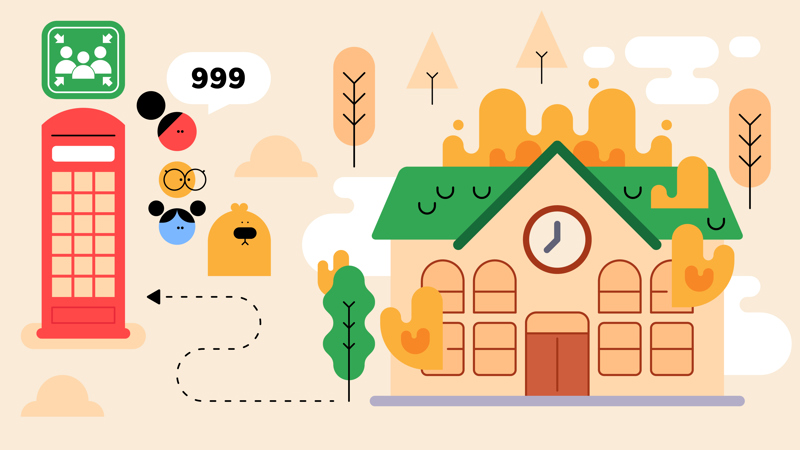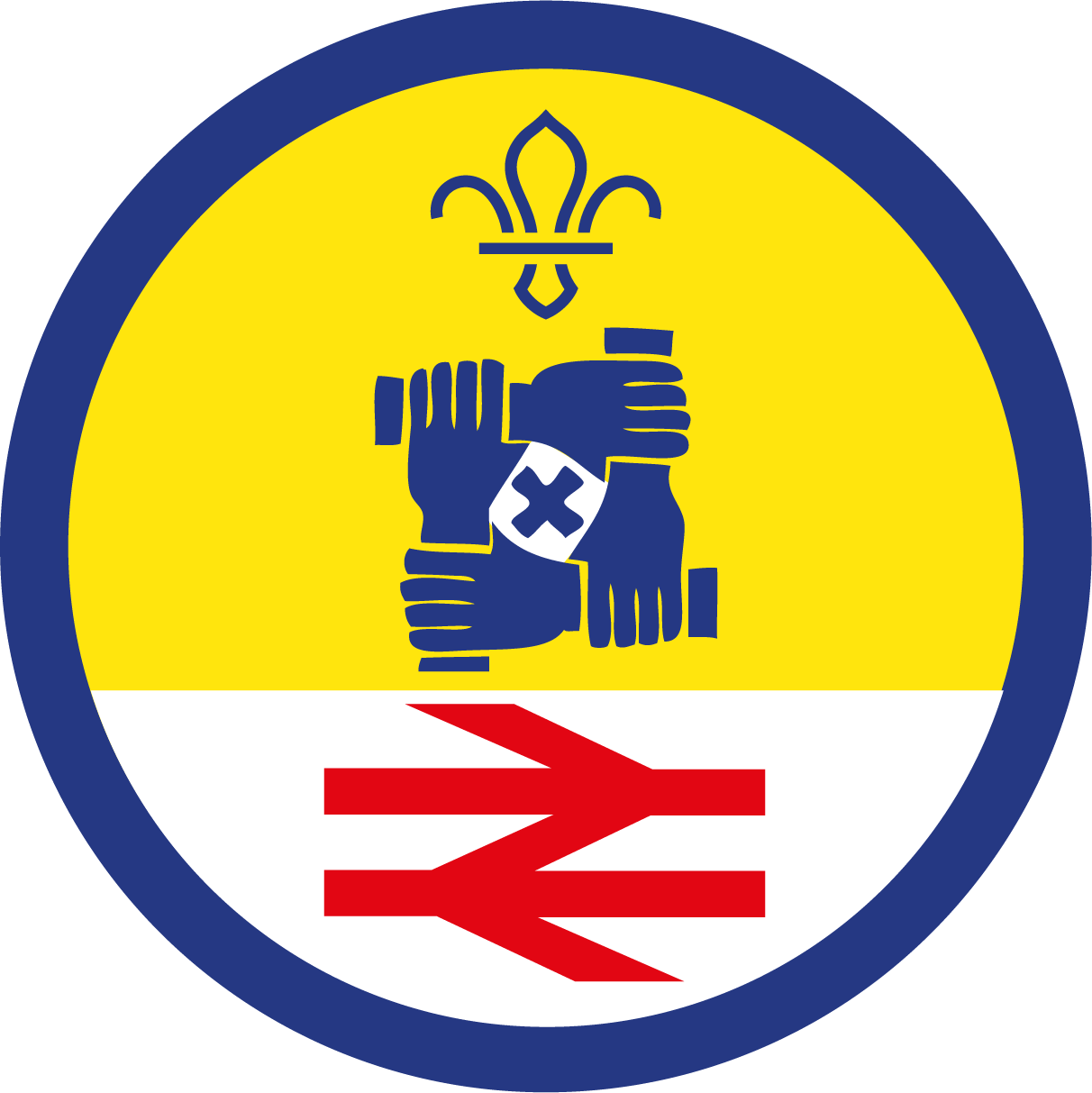
Know the drill
You’ll need
- Pens or pencils
- Fire safety checklist
- Firesafety items
Before you begin
- Note down all of the signs and fire-related objects in and around your meeting place. Include fire drill signs, emergency exit signs, smoke alarms, high-vis vests for fire marshals, fire extinguishers, fire blankets, and a fire assembly point.
- Decide whether you’ll do the activity as a whole group, or split into smaller groups and take turns. It’s up to you, depending on the size of your group and meeting place.
Fire safety monitors
- The person leading the game should explain that today, everyone will become a fire safety monitor. Their job will be to check the meeting space to make sure it’s safe in case of fire.
- Everyone should split into pairs. The person leading the game should give each pair a ‘Fire safety checklist’ sheet.
- Everyone should walk around the meeting space together. They should go inside and outside. They should stop at each fire-related item to talk about what it is and how it helps, then tick the item off their checklist.
Know the drill
- Now everyone knows about fire items, the person leading the activity should ask if anyone knows what to do if there’s a fire.
- The fire service recommends that people get out, stay out, and call 999. This means that people shouldn’t stop to pick anything up (even valuable things) and they shouldn’t tackle a fire themselves. They should leave the area quickly and sensibly without running.
- The person leading the activity should explain that when they shout ‘fire’, everyone should shout back ‘get out, stay out, call 999’ and walk sensibly to the nearest exit.
- The person leading the activity should start running a quick game to distract everyone.
- Once everyone’s distracted, the person leading the activity should shout ‘fire’.
- Everyone should shout back ‘get out, stay out, call 999’ and walk sensibly to the nearest exit. Everyone should follow the fire drill procedures of their meeting place.
- The person leading the activity (or the fire marshal) should lead everyone to the assembly point and count everyone. Everyone should stay calm and quiet while the person checks that everyone’s there.
- The person leading the activity should congratulate everyone who was quiet, calm, and helpful.
Reflection
This activity helped everyone to remember basic fire safety rules. Everyone learned how to make sure a space is safe in case of fire, and what to do in an emergency situation. The person leading the reflection should remind everyone that, thankfully, fires are rare – but it’s great that now everyone knows what to do to stay safe. Everyone should share one piece of advice they’d give someone who doesn’t know about fire safety yet (for example, a younger sibling). Maybe they’d remind someone to stay calm, to walk to the emergency exit, to stay outside, or to call 999. Everyone should shout the phrase ‘get out, stay out, call 999’ one more time. Well done to everyone who was responsible in the activity.
Safety
All activities must be safely managed. You must complete a thorough risk assessment and take appropriate steps to reduce risk. Use the safety checklist to help you plan and risk assess your activity. Always get approval for the activity, and have suitable supervision and an InTouch process.
- Outdoor activities
You must have permission to use the location. Always check the weather forecast, and inform parents and carers of any change in venue.
You may need to speak instead of shout, or avoid using the alarm, if anyone struggles with loud noises.
Disabled people should have a person evacuation plan – they should know what to do, and all adults should also know about the plan. Make sure anyone else who may struggle to evacuate because of something temporary (for example, a broken leg) has help from an adult.
This activity may be difficult or upsetting for anyone who’s been involved in or has witnessed a fire (or has known someone who’s been involved in or witnessed a fire). Let people (and their parents or carers) know about this activity in advance. You may need to have a chat with some people, or adapt the activity so they can take part.
All Scout activities should be inclusive and accessible.
Why not invite a firefighter in to talk to everyone about fire safety? This could also count towards the My World Challenge Award. You could also visit a local fire station to find out more about how firefighters tackle fires and other emergencies.
